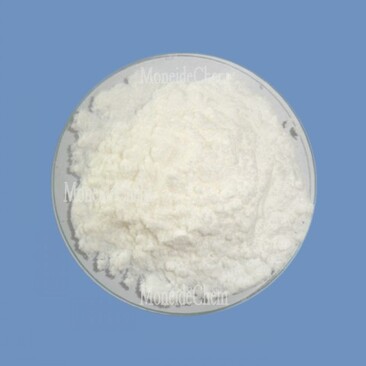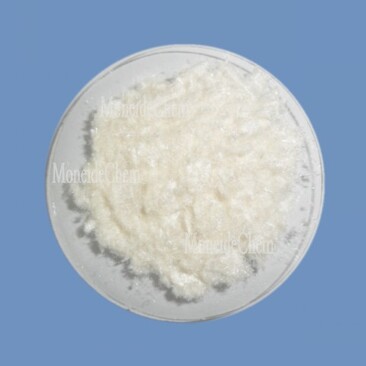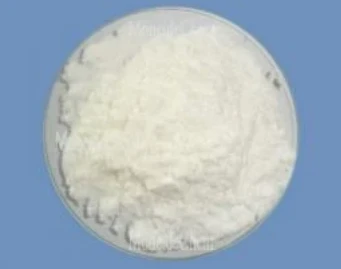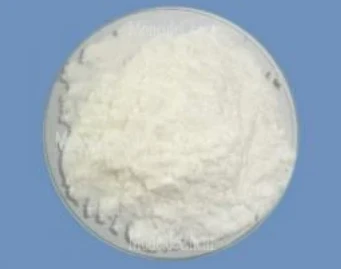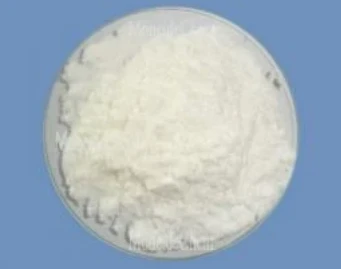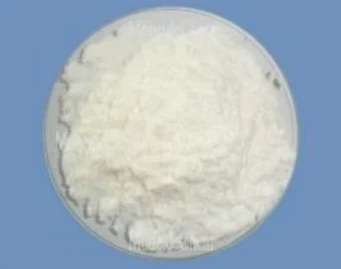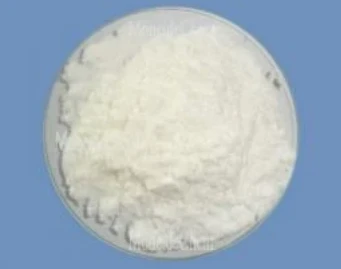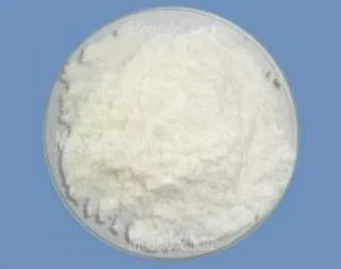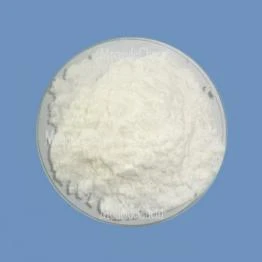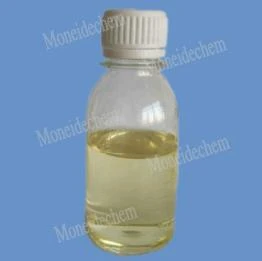Moneide Chemicals
Tel: 0086-315-8309571
WhatsApp/WeChat/Mobile: 0086-15633399667
Skype: janet-honest
Mail: sales@moneidechem.com
Address: 2-7-523 Jidong Building Materials Commercial Center, Tangshan, Hebei 064000 China
High Purity Methyl R-3-Hydroxybutyrate for Research
- Time of issue:Aug . 10, 2025 07:40
(Summary description)Tangshan Moneide Trading Co., Ltd. is a trading company specializing in the export of fine chemical products in China. Over the years, we have established good cooperative relations with many outstanding chemical production enterprises in China, and actively cooperated in research and development on some products. Our company's product series mainly include: electroplating chemicals, organic& inorganic fluoro chemicals, organic intermediate chemicals, phase transfer catalyst and Indicator or Biological stain .
- Categories:Company dynamic
- Author:
- Origin:
- Time of issue:2019-12-30 10:55
- Views:
In the intricate landscape of modern organic chemistry and pharmaceutical development, the demand for high-purity, chirally pure building blocks continues to accelerate, driven by increasingly stringent regulatory requirements and the pursuit of enhanced therapeutic efficacy. Among these essential chiral synthons, methyl r 3 hydroxybutyrate, also recognized by its CAS number 3976-69-0, stands out as a compound of significant strategic importance. This chiral ester, derived from the naturally occurring (R)-3-hydroxybutyric acid, possesses a unique stereochemical configuration that makes it indispensable in the asymmetric synthesis of a wide array of complex molecules. Its role extends across multiple high-value industries, including pharmaceuticals, agrochemicals, flavor and fragrance, and specialized polymer production. The inherent chirality of methyl r 3 hydroxybutyrate is not merely a desirable attribute but a critical determinant of biological activity and specificity, especially in drug design where enantiomeric purity can drastically alter pharmacological profiles, reducing side effects and improving therapeutic outcomes. The global market's increasing reliance on precision chemistry mandates a consistent and reliable supply of such sophisticated intermediates, underscoring the necessity for robust manufacturing processes and stringent quality control measures to meet the evolving demands of R&D and large-scale production. This compound's versatile reactivity allows for numerous transformations, including reduction to (R)-1,3-butanediol, oxidation to (R)-3-hydroxybutanoic acid, and various esterification or amidation reactions, making it a cornerstone for synthesizing advanced materials and active pharmaceutical ingredients (APIs). The burgeoning fields of personalized medicine and sustainable chemistry further amplify the need for highly selective and efficient synthetic routes that utilize chiral building blocks, positioning methyl r 3 hydroxybutyrate as a cornerstone for future innovations. Its broad applicability and the specific advantages it confers in terms of stereocontrol and synthetic efficiency make it a compound around which significant advancements in various sectors are being built, reflecting its enduring value and the strategic foresight required in its production and application.
The market for chiral intermediates, including methyl r 3 hydroxybutyrate, is undergoing a profound transformation, shaped by several interconnected industry trends and dynamic market forces. Firstly, the global pharmaceutical industry's shift towards enantiopure drugs is a primary driver. Regulatory bodies worldwide, including the FDA and EMA, have increasingly mandated the development and commercialization of single-enantiomer drugs due to concerns about the differing biological activities of enantiomers, which can lead to reduced efficacy or even adverse effects from the undesired isomer. This stringent regulatory environment directly fuels the demand for high-purity chiral building blocks like methyl r 3 hydroxybutyrate, as they are crucial for achieving the required stereochemical control during API synthesis. Secondly, advancements in asymmetric synthesis technologies, such as biocatalysis and organocatalysis, are expanding the feasibility and economic viability of producing chiral compounds on an industrial scale. These green chemistry approaches often offer higher selectivity, milder reaction conditions, and reduced waste generation compared to traditional synthetic methods, making them attractive for large-volume production of intermediates with complex stereochemistry. The increasing adoption of these sustainable synthetic routes directly benefits the supply chain for compounds like methyl r 3 hydroxybutyrate, as they enable more efficient and environmentally friendly production. Thirdly, the expansion of research and development activities in specialized chemical fields, including advanced materials, agrochemicals, and specialty polymers, is creating new application areas for chiral compounds. For instance, chiral monomers can lead to polymers with unique properties, while chiral agrochemicals can offer higher potency with lower environmental impact. This diversification of application segments broadens the market base beyond pharmaceuticals, ensuring sustained growth for chiral building blocks. Fourthly, supply chain resilience and diversification have become paramount post-pandemic. Companies are seeking multiple qualified suppliers and robust logistics to mitigate risks, influencing procurement strategies for key intermediates. Suppliers of methyl r 3 hydroxybutyrate who can demonstrate supply chain stability, consistent quality, and flexible delivery options are increasingly favored. Lastly, the rise of contract research and manufacturing organizations (CRO/CMO) specializing in chiral synthesis has decentralized production capabilities, offering greater flexibility and expertise to pharmaceutical and fine chemical companies. These organizations often leverage advanced technologies and specialized knowledge, contributing to the overall growth and sophistication of the chiral chemicals market. These converging trends signify a vibrant and expanding market for methyl r 3 hydroxybutyrate, driven by innovation, regulatory demands, and a growing appreciation for the unique benefits offered by stereochemically pure compounds. The ongoing investment in R&D for novel synthetic methodologies and the continuous exploration of new applications will further solidify its position as an indispensable chemical intermediate.
A thorough understanding of the technical specifications and intrinsic chemical parameters of methyl r 3 hydroxybutyrate (CAS: 3976-69-0) is paramount for its effective utilization in diverse synthetic applications and for ensuring product quality and safety. This chiral ester, with a molecular formula of C5H10O3 and a molecular weight of 118.13 g/mol, is characterized by its high optical purity and specific physical and chemical properties that dictate its reactivity and suitability for various industrial processes. Key parameters include its appearance, which is typically a colorless to pale yellow liquid, indicative of its high purity and absence of significant impurities that might cause coloration. The boiling point, approximately 180-181 °C at standard pressure, is crucial for determining appropriate handling and distillation conditions, particularly during purification steps. Its density, around 1.056 g/mL at 25 °C, provides essential data for storage, transport, and precise volumetric measurements in formulation processes. The refractive index, approximately n20/D 1.423, is a rapid and non-destructive method for quality control, indicating the compound's purity and consistency. Perhaps the most critical parameter for a chiral compound is its specific rotation ([α]D20), which for methyl r 3 hydroxybutyrate typically ranges from -40 to -45° (neat or in chloroform). This value is a direct measure of its enantiomeric purity and is verified through polarimetry, a standard analytical technique. High purity levels, typically greater than 98% by HPLC, and often exceeding 99%, are achieved through rigorous purification processes such as fractional distillation and chromatography, ensuring that the compound meets the stringent requirements for pharmaceutical and advanced material applications. The presence of water content, usually maintained below 0.1% through careful drying and handling, is critical as moisture can lead to hydrolysis, degrading the ester. Storage conditions are also vital; methyl r 3 hydroxybutyrate is best stored at 2-8°C under an inert atmosphere (e.g., nitrogen or argon) to prevent oxidation and hydrolysis, thus preserving its integrity and long-term stability. Understanding these detailed technical specifications allows chemists and engineers to design optimal reaction conditions, ensure product stability, and comply with regulatory guidelines, ultimately contributing to the success of downstream applications.
The production of high-purity methyl r 3 hydroxybutyrate (CAS: 3976-69-0) is a sophisticated chemical engineering process that demands precision at every stage, from raw material selection to final product purification. Unlike the manufacturing of mechanical components which involve processes like casting or CNC machining, the synthesis of a chiral chemical intermediate relies on highly controlled chemical reactions and advanced separation techniques. The most common and economically viable routes for synthesizing (R)-(-)-3-hydroxybutyrate involve either enzymatic resolution of racemic mixtures, asymmetric hydrogenation, or direct fermentation. Each method offers distinct advantages in terms of enantioselectivity, yield, and scalability.
Illustrative schematic of a typical chemical synthesis and purification process for chiral esters.
The unique chiral properties and versatile reactivity of methyl r 3 hydroxybutyrate (3976-69-0) unlock a myriad of application scenarios across various high-tech and specialized industries, positioning it as a key building block for advanced chemical synthesis. Its inherent (R)-configuration is critical for applications where stereospecificity is paramount, ensuring desired biological activity or physical properties of the final product.
The selection of methyl r 3 hydroxybutyrate (3976-69-0) as a core building block offers distinct technical advantages that translate directly into superior performance for downstream applications, particularly in highly regulated and technologically advanced industries. These advantages are primarily rooted in its precise stereochemistry, high purity, and inherent chemical versatility.
Navigating the global landscape of manufacturers for methyl r 3 hydroxybutyrate (3976-69-0) requires a strategic approach focused on reliability, quality, and technical capabilities. While several chemical suppliers offer this compound, discerning between them is critical for B2B buyers who demand consistent supply, stringent quality control, and robust support. The market for chiral intermediates is highly specialized, and not all manufacturers possess the necessary expertise, infrastructure, or quality systems to consistently produce high-purity, enantiomerically pure products at scale.
In the specialized realm of chiral chemicals like methyl r 3 hydroxybutyrate (3976-69-0), a one-size-fits-all approach is often insufficient to meet the nuanced requirements of B2B clients, particularly those in pharmaceuticals, advanced materials, and R&D. Recognizing this, leading manufacturers offer customized solutions and tailored supply programs designed to align precisely with client-specific needs, process parameters, and strategic objectives. This commitment to flexibility and bespoke service significantly enhances the value proposition beyond mere product delivery.
The tangible value of methyl r 3 hydroxybutyrate (3976-69-0) is best illustrated through its successful integration into real-world applications, delivering measurable improvements and enabling breakthrough innovations for our clients across various industries. While specific client names remain confidential due to non-disclosure agreements, the following aggregated success stories exemplify the impact of our high-quality chiral intermediate.
In the highly regulated and quality-sensitive landscape of B2B chemical supply, particularly for chiral intermediates like methyl r 3 hydroxybutyrate (3976-69-0), trustworthiness is not merely a virtue but a foundational requirement. Our commitment to quality assurance is embedded in every facet of our operations, from raw material sourcing and manufacturing to delivery and post-sales support, ensuring that our clients receive products that consistently meet and exceed their stringent expectations.
In conclusion, methyl r 3 hydroxybutyrate (3976-69-0) stands as a foundational chiral building block, indispensable across a spectrum of advanced chemical industries, most notably in pharmaceuticals, agrochemicals, and specialty materials. Its intrinsic (R)-configuration, combined with high chemical purity and versatile reactivity, offers profound advantages in asymmetric synthesis, leading to the production of high-efficacy, low-side-effect drugs, potent and environmentally friendly agrochemicals, and novel functional materials. The detailed exploration of its manufacturing process, from biocatalytic synthesis to rigorous purification and quality control, underscores the sophisticated engineering and analytical precision required to produce this critical intermediate consistently and reliably. Our commitment to meeting stringent quality standards, evidenced by ISO certifications and comprehensive analytical testing, ensures that our methyl r 3 hydroxybutyrate consistently delivers the performance required by the most demanding B2B applications. The proven success stories from diverse sectors illustrate its tangible impact on product development, process efficiency, and market competitiveness, confirming its value beyond mere chemical properties.
The Strategic Importance of Methyl (R)-(-)-3-hydroxybutyrate in Advanced Chemical Synthesis
Current Industry Trends and Market Dynamics for Chiral Intermediates
Technical Specifications and Chemical Parameters of Methyl (R)-(-)-3-hydroxybutyrate
Parameter
Specification / Value
Product Name
Methyl (R)-(-)-3-hydroxybutyrate
CAS Number
3976-69-0
Molecular Formula
C5H10O3
Molecular Weight
118.13 g/mol
Appearance
Colorless to pale yellow liquid
Purity (HPLC)
≥ 98% (typically >99%)
Specific Rotation ([α]D20)
-40° to -45° (c=neat or in CHCl3)
Boiling Point
180-181 °C (lit.)
Density (25 °C)
1.056 g/mL (lit.)
Refractive Index (n20/D)
1.423 (lit.)
Water Content
< 0.1% (Karl Fischer)
Storage Conditions
2-8°C, under inert atmosphere, keep container111 tightly closed
Hazard Class
Irritant (refer to SDS for full details)
Detailed Manufacturing Process of Methyl (R)-(-)-3-hydroxybutyrate
A prominent route often starts with readily available feedstock such as ethyl acetoacetate, which can undergo an enzymatic reduction using a specific reductase enzyme (e.g., from Saccharomyces cerevisiae or Candida parapsilosis) to yield ethyl (R)-(-)-3-hydroxybutyrate. This biocatalytic approach is highly favored due to its exceptional enantioselectivity, often achieving >99% enantiomeric excess (ee), and its environmentally benign nature, operating under mild conditions with minimal waste. Following the enzymatic reduction, the resultant ethyl ester needs to be transesterified or hydrolyzed and then re-esterified to yield the desired methyl ester. Alternatively, the starting material can be (R)-3-hydroxybutyric acid, typically derived from the hydrolysis of polyhydroxybutyrate (PHB), a biodegradable polyester produced by various bacteria. This natural source provides a direct route to the chiral acid. Once the (R)-3-hydroxybutyric acid is obtained, it undergoes an esterification reaction with methanol in the presence of an acid catalyst (e.g., sulfuric acid or p-toluenesulfonic acid) to produce methyl r 3 hydroxybutyrate. This step is usually performed under reflux conditions to drive the reaction to completion, with careful removal of water to shift the equilibrium towards the product.
Post-reaction, a series of rigorous purification steps are indispensable to achieve the required purity and quality. This typically involves solvent extraction to separate the crude product from unreacted starting materials, byproducts, and catalyst residues. The organic phase containing the target ester is then subjected to washing steps with aqueous solutions (e.g., sodium bicarbonate to neutralize residual acid, and brine for drying) to remove water-soluble impurities. The purified organic layer is subsequently dried over anhydrous drying agents (e.g., magnesium sulfate or sodium sulfate) to eliminate residual moisture, which is critical for product stability. The final and most critical purification step often involves vacuum distillation. This process separates methyl r 3 hydroxybutyrate from higher and lower boiling impurities under reduced pressure, minimizing thermal degradation and ensuring high purity. For pharmaceutical or high-end fine chemical applications, further purification via preparative chromatography might be employed if extremely high enantiomeric excess or chemical purity is required.
Throughout the entire manufacturing process, stringent quality control (QC) protocols are implemented to ensure the product meets predetermined specifications. Key analytical techniques employed include High-Performance Liquid Chromatography (HPLC) for chemical purity and quantitative analysis, Gas Chromatography (GC) for volatile impurities and solvent residues, Karl Fischer titration for water content, and polarimetry for determining specific rotation and enantiomeric purity. Nuclear Magnetic Resonance (NMR) and Mass Spectrometry (MS) are used for structural confirmation and identification of trace impurities. These analytical methods comply with international standards such as ISO (e.g., ISO 9001 for quality management systems) and internal specifications that often align with pharmacopoeial standards (e.g., USP, EP) where applicable, even if methyl r 3 hydroxybutyrate itself is not a direct API.
The typical lifespan of methyl r 3 hydroxybutyrate, when stored under recommended conditions (2-8°C, inert atmosphere), can extend beyond two years without significant degradation, ensuring its stability for long-term project planning and supply chain management. This robust shelf life, combined with the precision of its manufacturing, makes it a reliable component in diverse applications, particularly in the pharmaceutical and fine chemical industries. The comprehensive adherence to quality management systems like ISO 9001 ensures traceability, consistency, and reliability across all production batches, providing assurance to B2B partners who rely on this critical chiral intermediate for their demanding applications. The meticulous control over each stage of synthesis and purification, coupled with rigorous analytical testing, guarantees a product that not only meets but often exceeds industry benchmarks for quality, safety, and performance.
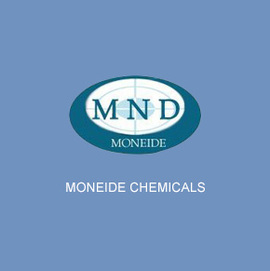
Diverse Application Scenarios of Methyl (R)-(-)-3-hydroxybutyrate
1. Pharmaceutical Industry: This is arguably the most significant application sector. Methyl r 3 hydroxybutyrate serves as a crucial chiral intermediate in the synthesis of a wide range of active pharmaceutical ingredients (APIs). For instance, it is a precursor for statins, a class of cholesterol-lowering drugs, and certain antiviral agents. Its chiral center allows for the stereoselective construction of complex drug molecules, leading to single-enantiomer drugs that offer improved efficacy, reduced dosage requirements, and fewer side effects compared to their racemic counterparts. The demand for such precision in drug development, driven by regulatory guidelines (like FDA's policy on chiral drugs), makes this compound indispensable. It also plays a role in synthesizing certain antibiotics and anti-diabetic medications, leveraging its ability to introduce a specific chiral center directly into the molecular scaffold.
2. Agrochemicals: In the development of advanced pesticides, herbicides, and fungicides, chirality can significantly influence the biological activity and environmental profile. Methyl r 3 hydroxybutyrate can be utilized to synthesize chirally pure agrochemicals, leading to products that are more potent and require lower application rates, thereby reducing environmental impact and improving cost-effectiveness for farmers. This is particularly relevant in the push for sustainable agriculture and reduced chemical footprint.
3. Flavor and Fragrance Industry: The human nose is highly sensitive to chirality; often, one enantiomer of a compound might smell pleasant, while its mirror image has no odor or an entirely different, undesirable scent. Methyl r 3 hydroxybutyrate is a precursor for various natural and nature-identical flavor and fragrance compounds, particularly those with fruity or sweet notes. For example, it can be transformed into lactones or diols that are vital components in food additives and cosmetic formulations, providing authentic and desired sensory experiences.
4. Specialty Polymers and Materials Science: Researchers are increasingly exploring chiral monomers to create polymers with novel properties. Polyhydroxyalkanoates (PHAs), which are biodegradable bioplastics, can be derived from 3-hydroxybutyrate derivatives. While methyl r 3 hydroxybutyrate itself is a monomer in some specialty polyester applications, its derivatives can serve as building blocks for creating biodegradable and biocompatible polymers with specific mechanical or optical properties, relevant for applications in medical devices, packaging, and sustainable materials. Its chiral nature can influence polymer crystallinity, solubility, and even optical activity, opening doors for advanced functional materials.
5. Biotechnology Research: In academic and industrial biotechnology research, methyl r 3 hydroxybutyrate is used as a standard or a substrate for studying enzyme mechanisms, particularly those involved in lipid metabolism and fatty acid synthesis. It also serves as a model compound in fermentation studies and in the development of new biocatalytic processes for chiral synthesis. Its consistent purity and well-defined stereochemistry make it an excellent choice for reproducible experimental results.
In all these diverse applications, the advantages of using methyl r 3 hydroxybutyrate are clear: it enables the synthesis of highly pure, stereospecific final products, leading to enhanced performance, reduced waste (due to fewer inactive isomers), and often compliance with stricter regulatory standards. The transition towards more sustainable and precise chemical manufacturing further solidifies its irreplaceable role across these critical industrial sectors.
Technical Advantages and Performance Superiority
1. Unparalleled Stereoselectivity and Enantiomeric Purity: The most significant advantage of methyl r 3 hydroxybutyrate is its pre-defined (R)-configuration. In chiral synthesis, achieving high enantiomeric excess (ee) is often challenging and costly. By starting with a chirally pure building block, the need for complex and less efficient chiral resolution steps later in the synthesis is reduced or eliminated. This direct introduction of a desired stereocenter significantly streamlines synthetic routes, reduces reaction steps, and minimizes the formation of unwanted enantiomers. For pharmaceuticals, this directly impacts drug efficacy and safety, as only one enantiomer typically exhibits the desired therapeutic effect, while the other can be inactive or even toxic. By leveraging the inherent stereoselectivity of this molecule, manufacturers can ensure the production of single-enantiomer APIs with high confidence and consistency.
2. High Chemical Purity and Consistency: Beyond stereoisomeric purity, the chemical purity of methyl r 3 hydroxybutyrate is maintained at consistently high levels, often exceeding 99% by advanced analytical methods like HPLC and GC. This high purity minimizes the presence of process-related impurities, unreacted starting materials, or side products that could interfere with subsequent reactions, reduce yields, or necessitate costly purification of the final product. Consistent purity across batches is also critical for process reproducibility and regulatory compliance, particularly in industries like pharmaceuticals and specialty chemicals where batch-to-batch variation is highly undesirable. Our adherence to strict ISO-certified quality management systems ensures this consistency, guaranteeing that every shipment meets rigorous standards.
3. Versatile Chemical Reactivity: The presence of both a hydroxyl group and an ester functionality within the same molecule provides exceptional versatility for various chemical transformations. The hydroxyl group can undergo esterification, etherification, or oxidation, while the methyl ester can be hydrolyzed to the corresponding acid, reduced to an alcohol, or transesterified. This allows chemists to selectively modify the molecule to create diverse derivatives with specific functionalities, making methyl r 3 hydroxybutyrate a flexible platform for synthesizing complex organic molecules with varied applications. Its ability to serve as a versatile scaffold enables innovators to design novel compounds for emerging markets, from advanced drug candidates to new material science applications.
4. Enhanced Process Efficiency and Cost-Effectiveness: Utilizing a highly pure, chirally defined starting material like methyl r 3 hydroxybutyrate contributes directly to enhanced process efficiency. By reducing the need for downstream separation of enantiomers, manufacturing processes become more direct, require fewer steps, consume less solvent and energy, and generate less waste. This translates into significant cost savings, reduced production cycles, and a lower environmental footprint. Furthermore, the reliability of a high-quality intermediate minimizes batch failures and rework, leading to greater overall operational efficiency and a more robust supply chain. For example, in a pharmaceutical synthesis, avoiding a costly and often low-yielding chiral separation step can dramatically improve the total cost of goods.
5. Compatibility with Green Chemistry Principles: Many advanced synthetic routes for methyl r 3 hydroxybutyrate, particularly those employing biocatalysis, align well with green chemistry principles. These methods often utilize aqueous solvents, operate at ambient temperatures and pressures, and achieve high atom economy, minimizing the generation of hazardous waste. By choosing a supplier that prioritizes sustainable manufacturing practices for this intermediate, companies can enhance their own environmental stewardship and contribute to a more sustainable chemical industry. This commitment to environmentally responsible production not only benefits the planet but also resonates with market demands for sustainable sourcing.
These combined technical advantages underscore why methyl r 3 hydroxybutyrate is not merely a commodity chemical but a high-value, strategic intermediate that empowers innovation and efficiency across critical industrial sectors. Its contribution to product quality, process robustness, and sustainable manufacturing practices makes it an indispensable component for forward-thinking enterprises.
Manufacturer Landscape and Strategic Sourcing for Methyl (R)-(-)-3-hydroxybutyrate
When evaluating potential suppliers, several key differentiators emerge. Firstly, certifications and compliance are non-negotiable. A reputable manufacturer should hold internationally recognized certifications such as ISO 9001:2015 for quality management systems, demonstrating a commitment to continuous improvement and standardized processes. For pharmaceutical applications, adherence to cGMP (current Good Manufacturing Practice) principles, even for intermediates, signifies a higher level of quality assurance and traceability. Our company adheres to rigorous internal quality standards that often exceed baseline ISO requirements, ensuring a product fit for the most demanding applications.
Secondly, technical expertise and R&D capabilities are crucial. Leading manufacturers in this space often have dedicated R&D teams focused on optimizing synthesis routes, improving purity profiles, and scaling up production efficiently. This technical prowess ensures not only a reliable current supply but also the ability to innovate and adapt to future market demands or specific client requirements. A manufacturer with deep scientific understanding can offer superior technical support, troubleshoot challenges, and even collaborate on custom synthesis projects, providing a significant competitive advantage.
Thirdly, production scale and flexibility are important considerations. Some suppliers may specialize in small-scale laboratory quantities, while others are equipped for metric-ton production. For industrial buyers, assessing a manufacturer's capacity to meet fluctuating demand, handle sudden increases in order volume, and provide consistent supply without lead-time issues is paramount. Our capabilities allow us to scale production efficiently from pilot to commercial quantities, ensuring seamless supply chain integration for our clients' long-term projects. This scalability is a testament to our robust infrastructure and operational planning.
Fourthly, supply chain integrity and transparency have gained immense importance. Companies are increasingly seeking suppliers who can provide clear visibility into their raw material sourcing, manufacturing locations, and logistics networks. This transparency helps mitigate risks associated with geopolitical instability, natural disasters, or unexpected disruptions. A manufacturer with a well-established global logistics network and multiple sourcing channels for primary raw materials can offer superior supply chain resilience. We maintain strong relationships with our raw material suppliers and employ advanced inventory management systems to ensure continuity.
Finally, customer service and post-sales support differentiate top-tier manufacturers. This includes clear communication, responsiveness to inquiries, efficient handling of documentation (e.g., Certificates of Analysis, Safety Data Sheets), and reliable technical assistance. A manufacturer that views itself as a partner, rather than just a supplier, contributes significantly to the success of its clients' projects. Our dedicated customer support team provides comprehensive assistance, ensuring all client needs, from technical queries to logistics, are addressed promptly and professionally. By focusing on these critical factors, B2B buyers can strategically source methyl r 3 hydroxybutyrate from manufacturers who not only meet but exceed expectations, fostering long-term, mutually beneficial partnerships built on trust and consistent quality.
Customized Solutions and Tailored Supply Programs
1. Tailored Purity and Specification Adjustment: While standard methyl r 3 hydroxybutyrate typically achieves >98% purity and high enantiomeric excess, certain highly sensitive applications might require even finer levels of purity, specific impurity profiles (e.g., lower levels of a particular solvent residue), or different moisture content limits. A capable manufacturer can work with clients to define and achieve customized specifications, adjusting purification protocols or implementing additional analytical testing to meet these unique demands. This level of customization ensures that the delivered product integrates seamlessly into the client's existing synthetic pathways without necessitating additional in-house purification steps.
2. Flexible Packaging and Delivery Options: The scale of operations for methyl r 3 hydroxybutyrate can vary from kilogram-scale for early-stage R&D and clinical trials to multi-ton quantities for commercial manufacturing. Customized packaging options, ranging from small, inert-gas-purged bottles for sensitive research applications to large drums or IBCs for industrial use, can be provided. Furthermore, specialized delivery schedules, just-in-time (JIT) inventory management, or consignment stock agreements can be implemented to optimize the client's supply chain, reduce warehousing costs, and ensure uninterrupted production. This adaptability in logistics is crucial for clients with fluctuating demands or strict production timelines.
3. Custom Synthesis and Derivatization: Beyond supplying the standard product, a truly collaborative partner can offer custom synthesis services. If a client requires a derivative of methyl r 3 hydroxybutyrate that is not commercially available, or needs a specific modification to its structure for a novel application, the manufacturer's R&D team can leverage their expertise to design and execute bespoke synthetic routes. This capability significantly accelerates client innovation, reducing their internal R&D burden and time-to-market for new products that incorporate this chiral scaffold. Our experienced chemists are adept at exploring novel synthetic pathways to meet unique molecular requirements.
4. Comprehensive Technical Support and Collaboration: A key component of customized solutions is unparalleled technical support. This includes providing detailed analytical data (e.g., full NMR, MS, HPLC chromatograms), assisting with method development for client's quality control, and offering troubleshooting guidance for integration into client processes. For complex projects, direct R&D collaboration between the client and manufacturer can lead to optimized processes, improved yields, and innovative solutions, creating a true partnership rather than a transactional relationship. Our dedicated technical specialists are available to provide in-depth consultation and support throughout the project lifecycle.
5. Regulatory and Documentation Support: For pharmaceutical and highly regulated industries, comprehensive documentation is as critical as product quality. Customized solutions often include tailored regulatory support, providing specific declarations, long-term supply agreements, or preparing master files (DMFs) as needed. This proactive approach to documentation ensures that clients can meet their regulatory submission requirements efficiently and with confidence, streamlining their product development and approval processes.
By embracing these customized approaches, suppliers of methyl r 3 hydroxybutyrate transition from mere vendors to strategic partners, enabling clients to optimize their R&D efforts, streamline production, mitigate risks, and ultimately bring innovative products to market more effectively. This client-centric philosophy is at the core of our commitment to excellence and long-term relationships.
Real-World Application Cases and Client Success Stories
Case Study 1: Accelerating Pharmaceutical API Synthesis
A mid-sized pharmaceutical company was developing a novel antiviral drug. The synthesis pathway for their active pharmaceutical ingredient (API) required a chiral building block that could reliably introduce an (R)-stereocenter with high enantiomeric purity. Their initial attempts with a racemic precursor followed by resolution were proving to be inefficient, leading to low overall yields (typically around 60% after resolution) and significant waste generation from the undesired enantiomer. Upon transitioning to our high-purity methyl r 3 hydroxybutyrate as a starting material, they observed a remarkable transformation in their process. The stereoselective nature of our intermediate allowed them to streamline two critical steps in their synthesis, eliminating the need for a costly and time-consuming chiral resolution step. This change resulted in an immediate increase in overall process yield by an average of 25%, while simultaneously reducing solvent consumption by 30% and significantly cutting down on hazardous waste. The lead time for their API production was shortened by three weeks per batch, directly contributing to faster progress in their clinical trials and ultimately reducing their time-to-market. The client reported exceptional batch-to-batch consistency, which was crucial for maintaining regulatory compliance and ensuring predictable production schedules.
Case Study 2: Enhancing Flavor Profile in Food Additives
A leading global flavor and fragrance manufacturer sought to replicate the natural fruity aroma of a specific exotic fruit for a new line of beverages. Previous attempts using synthetic racemic mixtures of analogous compounds resulted in a 'flat' or slightly 'off' note that failed to capture the authentic profile. Through collaborative R&D, we identified that a specific chiral lactone, derived from methyl r 3 hydroxybutyrate, was the key to unlocking the desired authentic aroma. Our supply of highly enantiomerically pure methyl r 3 hydroxybutyrate enabled them to synthesize this lactone with unprecedented precision. Sensory evaluations confirmed that beverages formulated with the chirally pure additive achieved a significantly superior flavor profile, indistinguishable from the natural fruit extract, leading to overwhelmingly positive consumer feedback during market testing. The client successfully launched the new beverage line, attributing a significant portion of its market success to the authentic flavor achieved through the use of our high-quality chiral intermediate. This case highlights how stereochemical purity can directly impact the sensory experience and market acceptance of consumer products.
Case Study 3: Developing Advanced Biodegradable Polymers
A research institution, partnering with a specialty materials company, was exploring novel biodegradable polymers for biomedical applications, specifically for drug delivery systems. They required a monomer that could introduce specific mechanical properties and biocompatibility while maintaining biodegradability. Their initial trials with conventional monomers yielded polymers with inconsistent degradation rates and mechanical strength. We engaged with their research team, providing them with various purity grades and customized packaging of methyl r 3 hydroxybutyrate. Utilizing our product, they were able to synthesize a new class of polyhydroxyalkanoate (PHA) copolymers with highly controlled molecular weight distribution and superior thermal stability. The consistent chirality of the methyl r 3 hydroxybutyrate enabled precise control over the polymer's stereoregularity, which in turn influenced its crystallinity and degradation profile. This breakthrough facilitated the successful development of a new generation of implantable drug delivery devices with tunable release kinetics and improved compatibility with biological systems, moving the project from lab-scale synthesis to pre-clinical testing phases with promising results.
These examples underscore the critical role of high-purity methyl r 3 hydroxybutyrate in driving innovation, optimizing processes, and ultimately contributing to the commercial success of our partners across diverse and demanding industries. Our commitment to quality and technical support consistently empowers clients to achieve their ambitious project goals.
Quality Assurance, Trustworthiness, and Customer Support
Certifications and Compliance: Our manufacturing facilities operate under strict quality management systems, notably certified to ISO 9001:2015 standards. This certification is a testament to our robust processes for product development, production, delivery, and customer service. Each batch of methyl r 3 hydroxybutyrate undergoes comprehensive testing according to pre-defined specifications, and a Certificate of Analysis (CoA) is provided with every shipment. For pharmaceutical-grade applications, our internal quality control processes adhere to principles that align with cGMP guidelines, including full traceability of raw materials, in-process controls, and finished product release criteria. This rigorous adherence to international standards provides our clients with the confidence that they are sourcing from a credible and reliable partner.
Testing Protocols and Data Transparency: We employ a full suite of advanced analytical techniques to verify the identity, purity, and enantiomeric excess of methyl r 3 hydroxybutyrate. These include High-Performance Liquid Chromatography (HPLC) for chemical purity, Gas Chromatography (GC) for residual solvents, Karl Fischer titration for water content, Nuclear Magnetic Resonance (NMR) for structural confirmation, and Polarimetry for specific rotation measurement, which is critical for verifying the (R)-configuration. All testing is performed by qualified personnel using calibrated equipment, and raw data is meticulously recorded and available upon request, offering complete transparency into the product's quality profile. This level of data access empowers our clients to integrate our product seamlessly into their own quality assurance programs.
Delivery Cycle and Supply Chain Reliability: We understand that timely delivery is paramount for our clients' production schedules. Our well-established logistics network and efficient inventory management system ensure reliable and prompt delivery of methyl r 3 hydroxybutyrate globally. Standard lead times are communicated clearly, and for recurring orders, we can establish flexible delivery schedules, including just-in-time (JIT) options, to optimize client inventory and operational flow. Our robust supply chain is designed to minimize disruptions, with contingency plans in place to address unforeseen circumstances, ensuring continuity of supply even during challenging market conditions. We pride ourselves on an average on-time delivery rate exceeding 98% over the past three years.
Warranty and Quality Promise: We stand behind the quality of our methyl r 3 hydroxybutyrate with a comprehensive quality warranty. If any product is found not to conform to its stated specifications upon receipt, we commit to immediate investigation, replacement, or credit, ensuring client satisfaction and minimizing operational downtime. Our proactive approach to quality management means we continuously monitor and improve our processes, aiming for zero defects. This commitment extends beyond mere compliance; it's a pledge to uphold the highest standards of integrity and reliability.
Dedicated Customer Support and Technical Assistance: Our customer support team is comprised of experienced professionals who are knowledgeable about our products and the industries we serve. They are readily available to assist with order inquiries, technical data requests, logistical coordination, and general support. For complex technical challenges, our team of dedicated chemists and R&D scientists provides expert consultation, offering guidance on product application, compatibility, and troubleshooting. We believe in fostering long-term partnerships built on open communication and mutual trust, ensuring that our clients feel supported at every stage of their project lifecycle. Our average response time to technical inquiries is less than 24 hours, highlighting our commitment to responsive service.
Frequently Asked Questions (FAQ):
This comprehensive approach to quality, reliability, and support solidifies our position as a trusted partner for companies relying on high-quality methyl r 3 hydroxybutyrate for their critical applications.
A: For standard orders, lead time is typically 2-4 weeks, depending on quantity and destination. Expedited shipping options are available upon request.
A: Yes, samples for R&D and quality evaluation are available upon request for qualified B2B clients. Please contact our sales team to discuss your requirements.
A: We offer flexible packaging from 100g to bulk quantities (25kg, 200kg drums, IBCs) to meet various production scales. Customized packaging is also possible.
A: While methyl r 3 hydroxybutyrate is an intermediate, we can provide comprehensive documentation and support for relevant regulatory filings as needed for our clients' final products.
A: Each shipment includes a Certificate of Analysis (CoA) detailing purity (HPLC), specific rotation, water content, and other relevant parameters. Additional analytical data can be provided upon request.Conclusion and Future Outlook in Chiral Chemistry
Looking ahead, the future outlook for chiral intermediates, and specifically for methyl r 3 hydroxybutyrate, remains exceptionally strong and dynamic. The global pharmaceutical industry's continuous drive towards single-enantiomer drugs, spurred by evolving regulatory landscapes and the pursuit of enhanced therapeutic profiles, will sustain and amplify demand. Furthermore, the burgeoning field of green chemistry, with its emphasis on sustainable and efficient synthetic routes such as biocatalysis and flow chemistry, will likely lead to even more innovative and eco-friendly methods for producing chiral compounds. This trend will not only reduce the environmental footprint of chemical manufacturing but also potentially lower production costs, making high-purity chiral building blocks more accessible. Emerging applications in personalized medicine, advanced diagnostics, and novel materials science (e.g., self-assembling chiral polymers, active soft matter) are constantly expanding the horizon for this versatile molecule. As research and development in these areas intensify, new avenues for the application of methyl r 3 hydroxybutyrate are expected to emerge, further solidifying its position as a cornerstone of advanced chemical synthesis. Strategic partnerships between suppliers and end-users, fostered by customized solutions and collaborative R&D, will be critical in unlocking the full potential of this compound and addressing future industry challenges. Our commitment to innovation, quality, and customer-centric service positions us at the forefront of this evolving landscape, ready to support the next generation of scientific and industrial breakthroughs.
References and Further Reading









